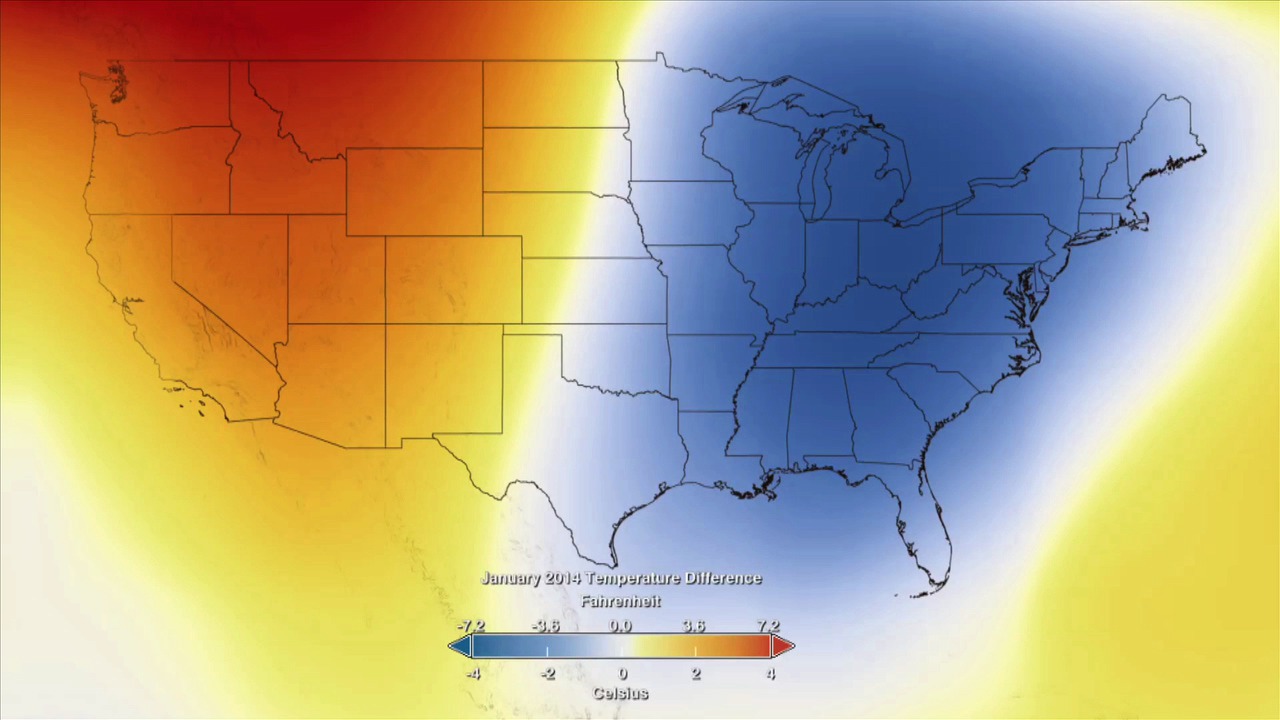Seasonal Vegetation and Snow Change
To determine the density of green on a patch of land, researchers must observe the wavelengths of visible and near-infrared sunlight reflected by the plants. The pigment in plant leaves, chlorophyll, strongly absorbs visible light (from 0.4 um - 0.7 um). Vegetation strongly reflects near-infrared light (from 0.7 -1.0 um). The more healthy leaves a plant has, the more the the visible light will be absorbed and the near-infrared will be reflected. In this animation, dark green indicates dense, healthy vegetation, whereas beige areas represent bare soil. Snow from the MODIS instruments is overlaid on top.
This 30 second animation shows 907 days (~2.5 years) of MODIS snow data overlaid on top of MODIS NDVI data. The still image is from January 2.
This video is also available on our YouTube channel.

Colortable showing MODIS 16 day composite Normalized Difference Vegetation Index (NDVI)
Credits
Please give credit for this item to:
NASA's Goddard Space Flight Center Scientific Visualization Studio
-
Animator
- Lori Perkins (NASA/GSFC)
-
Producers
- Michelle Handleman (USRA)
- Jefferson Beck (USRA)
-
Scientist
- Compton Tucker (NASA/GSFC)
-
Writer
- Patrick Lynch (Wyle Information Systems)
Release date
This page was originally published on Tuesday, March 19, 2013.
This page was last updated on Wednesday, May 3, 2023 at 1:52 PM EDT.
Missions
This visualization is related to the following missions:Series
This visualization can be found in the following series:Datasets used in this visualization
-
Ice and Snow (Pixel Reliability (value=2)) [Terra and Aqua: MODIS]
ID: 714 -
NDVI [Aqua: MODIS]
ID: 739
Note: While we identify the data sets used in these visualizations, we do not store any further details, nor the data sets themselves on our site.
